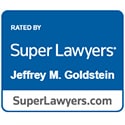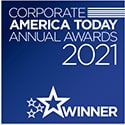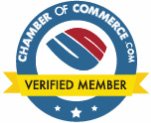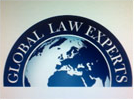Terminated Franchisee Beats the Odds and Sidesteps Injunction 3/6/16
By: Jeffrey M. Goldstein
Goldstein Law Firm goldlawgroup.com
(202) 293-3947
In a recent decision by the United States District Court for the District of Colorado, the Court denied the plaintiff franchisor’s motion for a preliminary injunction, showing that, in rare situations, it is possible for a terminated franchisee to escape the lethal injunctive pincers of the Lanham Act, the federal law that is frequently relied upon by franchisors to shut down a franchisee’s operations during termination disputes. The Intelligent Office System, LLC v. Virtualink Canada, LTD., 2016 U.S. Dist. LEXIS 20374 (USDC Col. February 18, 2016).
In Virtualink, IO was a Boulder-based LLC that had developed methods for establishing, operating, and promoting "virtual" offices, in which customers were enabled to split overhead costs by "sharing" the use of office personnel, office equipment, and office space. On February 1, 2006, IO and the Franchisee Virtualink Canada, LTD (“Virtualink”) entered into a 20-year "Master License Agreement" (“MLA”). Pursuant to the MLA, Virtualink was permitted to use IO’s "licensed methods" to license subfranchisees in most of Canada. In exchange, Virtualink agreed to unremarkable reciprocal franchisee obligations, including: (1) paying IO a percentage of the gross royalty receipts it collected from subfranchisees in Canada; (2) using IO's standards and specifications in developing new subfranchisees, including using IO’s form franchise agreement; and (3) hitting specified minimum "sales and opening goals" of virtual office centers in each year of the 20-year agreement.
The Franchisor began to express its dissatisfaction with the Franchisee on March 12, 2013, when it sent Virtualink a default letter stating that "IO has the option to terminate the Master License Agreement unless you cure the defaults described in the attached Schedule A to IO's satisfaction within 30 days of delivery of this notice (including but not limited to taking all of the actions described in Schedule A and providing proof of compliance)." In turn, Schedule A described eleven ways in which IO had allegedly breached the Franchise Agreement or defaulted, including "failing to meet and maintain the Sales and Opening goals as required by Section 5.2," and "Failing to provide reports and tax returns as required in Sections 11.1 and 11.2." A few weeks thereafter, on April 4, 2013, IO sent another default letter asserting that Virtualink failed to comply with the MLA when it had provided a new subfranchisee with a franchise agreement that "materially changed many of the terms of IO's required form Franchise Agreement, including waiving initial franchisee fees and royalties," and noting that such changes were not approved by IO.
Then, about four months later, on August 16, 2013, IO and Virtualink executed an Amendment to the MLA (“Amendment”) that, among other things, required Virtualink to develop, implement, and maintain a cloud-based, virtual "desktop" system for its subfranchisees by November 1, 2013. Heralding a “springing right” that was to be used offensively by IO later, the Amendment also provided that "upon a termination of the MLA, any Franchise Agreement (and rights and obligations thereunder accruing on or after the applicable assignment date) designated at any time by IO will be deemed assigned to IO (or its designee.)" In other words, the Franchisor used the circumstances surrounding the Amendment to extract from the Franchisee a clause that would result in an automatic ‘return’ to the Franchisor of all of the subfranchises by the Franchisee.
Two and a half months later, on November 6, 2013, IO sent an "Additional Notice of Default" to Virtualink, which again pinpointed a variety of Virtualink's alleged breaches of the MLA, including Virtualink's failure to do the following: (1) use IO's standard, form franchise agreements; (2) meet the MLA's "sales and opening goals"; (3) provide "any audited financial statements as well as copies of the tax returns for all Franchisees since at least far back as 2012"; and (4) develop, implement, maintain and offer the cloud-based computing system to subfranchisees. The lengthy default notice also asserted that "Virtualink has charged, or permitted its affiliates to charge, authorized fees to its unit franchisees, but has not included such fees in its reports to IO of its gross revenues, and has not paid royalties to IO on all such fees." Interestingly, the default letter also stated that "Although we may terminate now, as a continued courtesy (and not an obligation), IOS will consider providing you one more opportunity to cure all of the defaults described in the attached Schedule A and take other corrective action."
During the subsequent two years, between November of 2013 and October of 2015, the relationship between IO and Virtualink steadily further worsened, resulting in the issuance of an October 9, 2015 termination letter in which IO claimed to terminate the MLA. That letter outlined alleged breaches of the MLA relating to form of the franchise agreement, development schedule, operations compliance, reports and tax returns, and compliance with the law, brand protection, and cloud-based computing.
The Court pointed out preliminarily that an immutable characteristic of preliminary injunctions in general is that they are one of the “most extraordinary and drastic remedies a court can award.” The Court then affirmed the long-standing related axiom that the party seeking a PI must meet a higher standard or burden of proof — that its right to preliminary injunctive relief is "clear and unequivocal." Next, the Court set forth the proverbial ‘four part test’ that a PI movant must meet, including that: (1) it will suffer irreparable injury unless the injunction issues; (2) the threatened injury outweighs whatever damage the proposed injunction may cause the opposing party; (3) the injunction, if issued, would not be adverse to the public interest; and (4) there is a substantial likelihood of success on the merits.
The Court in setting out this analytical scaffolding also distinctly cautioned that "the limited purpose of a preliminary injunction is merely to preserve the relative positions of the parties until a trial on the merits can be held." The Court explained that, to the extent a movant requested that a Court disturb the status quo, its request, although it would not be rejected per se, would be subject to intensified scrutiny. As the Court stated with regard to this suspect issue: “Accordingly, if a movant requests a ‘disfavored’ preliminary injunction — that is, an injunction that ‘disturbs the status quo,’ is ‘mandatory as opposed to prohibitory’ or ‘affords the movant substantially all the relief it may recover at the conclusion of a full trial on the merits’ — the movant has an even more ‘heightened burden’ than usual.” The Court also cautioned that the movant for a PI “make a ‘strong showing . . . with regard to the balance of harms,’ and the ordinary injunction factors are ‘more closely scrutinized to assure that the exigencies of the case support the granting of a remedy that is extraordinary even in the normal course.’"
Then, in beginning its application of the four-factor test, the Court all but condemned the PI request by characterizing it as encompassing all three of the Tenth Circuit’s "disfavored" preliminary injunction markers. First, the Court noted that “the requested injunction would alter the status quo.” Importantly, in so concluding, the Court defined the status quo as the "last peaceable uncontested status existing between the parties before the dispute developed." In deciding this point the Court explained that it was necessary to look "to the reality of the existing status and relationship between the parties and not solely to the parties' legal rights." According to the Court, because Virtualink was the "Master Licensee" for the seventeen Canadian franchisees and was permitted to use IO's marks prior to the dispute, the Franchisor’s requested injunction “would entirely upend this arrangement.”
Second, the Court concluded that the requested PI was also somewhat stained because it was "mandatory," in that “the requested relief 'affirmatively requires the nonmovant to act in a particular way,’ by stopping the use of IO's marks and assigning the seventeen subfranchisees, ‘and as a result . . . places the issuing court in a position where it may have to provide ongoing supervision to assure the nonmovant is abiding by the injunction.'" Third, the Court opined that the PI was suspect because it “would provide almost all of the relief Plaintiff could obtain after trial, with the exception of monetary damages.”
Next, the Court turned to what many times turns out to be the most pivotal component associated with PI determinations, whether the movant – IO in this case — would be irreparably harmed by denial of the PI. Relying upon case law from the Tenth Circuit, the Court held that “The irreparable harm requirement is the ‘single most important prerequisite for the issuance of a preliminary injunction.’ Emphasizing the burden associated with this element, the Court made clear that "Merely serious or substantial" harm is not ‘irreparable’ harm. … Rather, to constitute irreparable harm, ‘an injury must be certain, great, actual and not theoretical.’" Further, the Court pointed out the well-accepted tenet that “simple economic loss usually does not, in and of itself, constitute irreparable harm," as such losses are compensable by monetary damages.
The Court then further fleshed-out the irreparable harm question by raising an issue usually not explicitly discussed in PI decisions by asking "whether such harm is likely to occur before the district court rules on the merits." In other words, “if a trial on the merits can be conducted before the injury would occur, there is no need for interlocutory relief.” In this regard, the Court pointed out that a PI “is not designed to remedy past harm; rather, it protects plaintiffs from irreparable harm that will ‘surely result’ without its issuance.” The Court finished drawing the analytical boundaries by noting that “unfounded fear of imminent harm” would not suffice.
With regard to its irreparable harm, IO made two arguments. First, IO claimed that unless the Court granted its PI request, which, in part, would have given seventeen Canadian franchisees back to the Franchisor before a trial occurred on the merits, "it is likely that the Canadian franchise system will disband or, alternatively, morph into a system that does not adhere to the licensed methods." IO further asserted that Virtualink lacked the infrastructure to properly "support" the Canadian Franchise system, and that some Canadian vendors and creditors claimed that Virtualink owed them money, which, according to IO, damaged the IO brand. Further, IO argued that, absent the PI (which would transfer and assign to IO all of the Franchisee’s subfranchises), IO "has no way to assure the Licensed Methods are being adhered to."
IO also attempted to short cut the need to present evidence by making the alternative argument that irreparable damage to its brand and reputation should be presumed automatically as a matter of law; under this argument, every minute that the Franchisee operated without the approval and authorization of the Franchisor created and caused irreparable harm. The Franchisor also argued that if the Franchisee made any sales to subfranchisees during the pendency of the lawsuit the Franchisor could later be sued for rescission by the subfranchisees, and such suits, argued the Franchisor, would cause irreparable harm to the Franchisor. The Court’s rejection of this argument was swift and pointed: “Not only is this speculation about the ‘potential’ of rescission insufficient to show irreparable harm, it was IO's choice to terminate the MLA, and even assuming, arguendo, that it will ultimately prevail at trial on its breach of contract claims, a party may not satisfy the irreparable harm requirement if the alleged harm is self-inflicted.” Concluding its view that IO had failed to establish irreparable harm, it found that “IO offered no evidence, much less made a "clear and unequivocal" showing that the Court must act now to prevent an "imminent" harm that is "certain, great, actual and not theoretical."
As part of its discussion of irreparable harm, the Court focused on the Franchisor’s delay in bringing its motion for PI: “IO's evidence indicates that the larger harms it alleges are neither ‘certain’ nor ‘imminent,’ as IO has long been complaining — since at least the spring of 2013 — about precisely the same issues with Virtualink's conduct which it now claims will bring about the end of the Canadian system and irreparably damage its brand.” On this point the Court thrashed the testimony of IO's Chief Executive Officer Ralph Gregory, stating that “his testimony amounted to little more than conclusory speculation about future harms.” Continuing its condemnation of IO’s delay, the Court stated that “most of the evidence of Virtualink's purported breaches of the MLA — from its failure to use form franchise agreements to its failure to provide audited tax returns — is pertinent to past injuries to IO, which may well be compensable with monetary damages after trial; however, injunctive relief is not designed to remedy past injuries.”
The Court’s focus on IO’s delay had some precedent in an earlier Tenth Circuit trademark decision from 1984, GTE Corp. v. Williams, 731 F.2d 676 (10th Cir. 1984). In that case, the Circuit Court, in affirming a lower court’s finding that irreparable harm had not been shown, explained that "any injury that Plaintiff would suffer before trial on the merits would be a relatively short extension of the injury that it knowingly suffered for three years before it filed suit." According to the Court, the Tenth Circuit in GTE Corp. noted that "Most of the advantage from defendant's use of the name 'General Telephone' has already accrued to defendant, and control of the quality of the products and services sold under the name 'General Telephone' . . . has long been in defendant's hands. The harm to plaintiff and the public 'cannot be materially aggravated or extended in the interim.'"
Analogizing IO’s situation to that of the unsuccessful movant in GTE Corp. the Court reasoned that IO's trade name and the control of the quality of the services sold under that name had been in Virtualink's hands since 2006, and it is undisputed that most of the issues between the parties had long been known to IO (such that IO has been "knowingly suffering" these same harms for years). Making matters worse for IO, the Court found that: “IO offers no evidence that the relatively short delay before trial would materially worsen the current situation, i.e., that the harm would ‘materially aggravated or extended’ between the present moment and a trial on the merits.” Circling back to its earlier point regarding timing, the Court concluded that IO’s failure “to demonstrate irreparable harm absent injunctive relief is further bolstered by IO's own significant delay in seeking that relief.” Finally, in rejecting the use of a legal presumption of irreparable harm, the Court stated: “the Tenth Circuit has significantly cabined this presumption in the face of delay by a movant. Specifically, ‘delay in seeking relief . . . undercuts any presumption that infringement alone has caused irreparable harm pendente lite; therefore such delay may justify denial of a preliminary injunction for trademark infringement.’"
Completing its lengthy analysis of irreparable harm, the Court explained that the Franchisor’s delay was legally fatal regardless of when the delay period began to run: “Whether IO's delay is measured from the point of IO's notice of default (which it sent almost three full years prior before the instant Motion was filed, and which explicitly threatened termination of the MLA), or the IO's final notice of termination (which it sent approximately four months before the instant Motion was filed), it is clear that IO's delay in requesting this injunction also indicates that IO would not suffer irreparable harm absent injunctive relief.”
After ruling that IO failed to establish irreparable harm, the Court explained that there was no need for it to evaluate any of the remaining four PI factors. Nevertheless, out of an abundance of caution, the Court addressed the ‘balance of equities’ factor, ruling that the balance clearly favored the Franchisee, not IO. In poignant contrast to IO’s failure to show irreparable harm, according to the Court, was Virtualink’s proof that entry of a PI would be its "death knell" (including the termination of Virtualink's business and all three of its employees). The Court quickly rejected as speculation IO’s argument that “Virtualink could simply be returned to its master franchisee status if it is later determined that an injunction was wrongly entered.” As the Court explained, IO “presented no evidence that this was a realistic prospect, nor that a ‘return’ could outweigh losses to Virtualink (monetary or otherwise) in the interim.” Moreover, the Court credited the Franchisee’s testimony that "in practice, such a return to master franchisee status would be impossible” because if Virtualink were terminated “it would face a serious loss of subfranchisee goodwill it could not salvage, as the virtual office business ‘is a relationship-based business. . . . And to see a revolving door of franchisors would create anything but a positive relationship.’" The Court also, almost as an aside, commented that the Franchisee “testified that currently, IO is accepting royalty payments from Virtualink and otherwise proceeding as usual, despite the purported termination of the MLA.”
The Court’s final ruling denying the Franchisor’s request for a PI can be summarized by one isolated sentence in the middle of the Court’s protracted opinion: “The Court agrees with Defendant that the harms to Virtualink, which are almost certain to occur — at worst, the total end of its business and the termination of all of its employees, and at best, the loss of goodwill that would invariably ensue if subfranchisees were wrongly assigned to IO — do outweigh the harms that IO speculates might possibly ensue in the absence of this injunction, particularly because, under the status quo, IO is currently receiving royalty payments from Virtualink.”
How much authority or precedential value does the Virtualink decision have in the franchise world? Not much, despite its very reasonable analysis, findings, and conclusions. Very simply, given the patchwork quilt of conflicting and dissimilar PI legal standards in other state and federal court circuits and systems in the country, it is highly likely that the majority of trial courts facing the same facts would have made a contrary ruling. Further, as one of the few remaining franchisee-only attorneys (there are truly only a handful of franchisee-only lawyers practicing today despite the voluminous misrepresentations of many franchise attorneys in this regard), I am able to say with certainty that this case is an outlier. In this regard, I’d estimate that a franchisee’s chances of prevailing in PI litigation in a termination context in general, on average, are only about 2 in 10. However, with a receptive court (e.g., one in the Tenth Circuit) and a talented and experienced franchise lawyer on your side, it is possible to beat the averages – indeed, I and my firm in representing our franchisee and dealer clients have won our last 6 out of 7 PI disputes.
By: Jeffrey M. Goldstein
Goldstein Law Firm goldlawgroup.com
(202) 293-3947
































